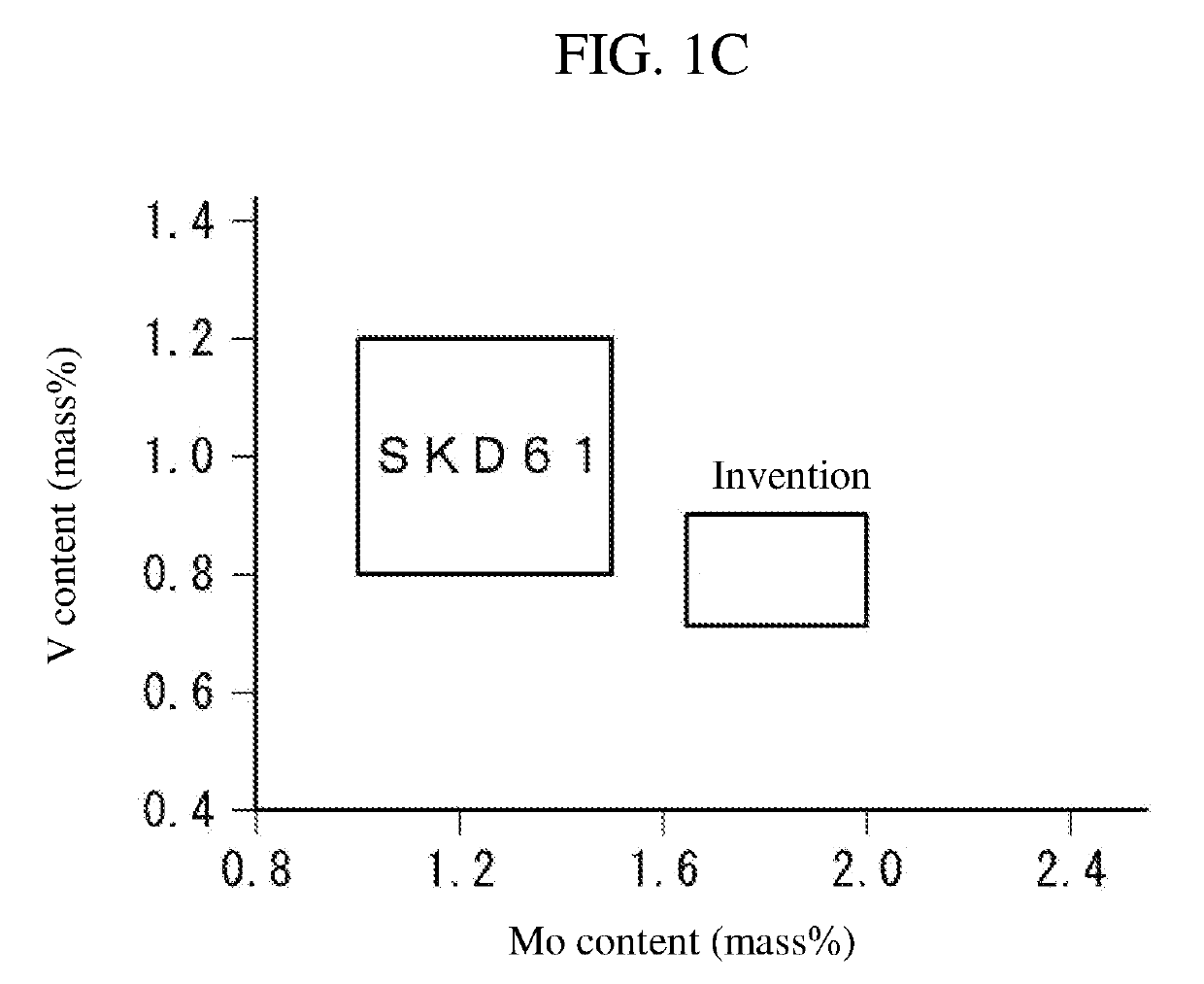Steel for mold, and mold
- Summary
- Abstract
- Description
- Claims
- Application Information
AI Technical Summary
Benefits of technology
Problems solved by technology
Method used
Image
Examples
examples
[0191]Examples and Comparative Examples (total 20 steel grades) shown in Table 2 were tested to evaluate annealing property, crystal grain size, an impact value, and thermal conductivity thereof.
[0192]Comparative Example 1 provides a general-purpose hot-working die steel SKD61. Comparative Examples 2 to 5 provide hot-working die steels available in the market as modified steels for SKD61. Comparative Examples 6 and 7 provide steels that have composition similar to those of the present invention than those of Comparative Examples 1 to 5.
[0193]In Comparative Examples 1 to 5, four to six elements among the main seven elements of C—Si—Mn—Cr—Mo-V-N are out of the ranges of the present invention. In Comparative Examples 6 and 7, at least one element of Mn—Cr—Mo is out of the ranges of the present invention.
TABLE 2Chemical Composition (mass %, balance: Fe and inevitable impurities)CSiMnCrMoVNOthersExam-10.350.0030.725.651.650.710.027ples20.400.200.946.002.000.900.08030.370.0050.775.671.670...
PUM
| Property | Measurement | Unit |
|---|---|---|
| Fraction | aaaaa | aaaaa |
| Fraction | aaaaa | aaaaa |
| Fraction | aaaaa | aaaaa |
Abstract
Description
Claims
Application Information
 Login to view more
Login to view more - R&D Engineer
- R&D Manager
- IP Professional
- Industry Leading Data Capabilities
- Powerful AI technology
- Patent DNA Extraction
Browse by: Latest US Patents, China's latest patents, Technical Efficacy Thesaurus, Application Domain, Technology Topic.
© 2024 PatSnap. All rights reserved.Legal|Privacy policy|Modern Slavery Act Transparency Statement|Sitemap



